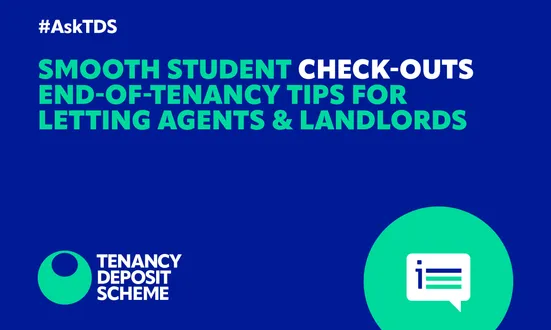If you’re a landlord or letting agent, you’re likely familiar with the term “fair wear and tear.” However, understanding what it actually means, as well as when it’s not applicable, can be challenging. In this week’s Ask TDS, the Tenancy Deposit Scheme explores the definition of fair wear and tear and offers guidance on how to handle situations when they exceed reasonable use.
What is fair wear and tear?
Fair wear and tear refers to the reasonable deterioration that occurs in a rental property over time, as a result of normal, everyday use during the period of a tenancy. It’s separate from damage caused by misuse, negligence, or intentional actions of a tenant, which the tenant should be responsible for.
What are some examples of fair wear and tear?
Examples of fair wear and tear can include:
- faded paint or wallpaper
- small scuffs on walls or floors
- worn carpets or curtains.
Essentially, any damage that occurs as a result of ordinary use and can’t be attributed to a specific incident or misuse by the tenant can be considered fair wear and tear.
However, it’s important to note that fair wear and tear is not always clear-cut. It can depend on factors such as the length of the tenancy, the type of property, and the quality of materials used.
For example, a carpet that is five years old and has been used by multiple tenants will likely show more signs of wear and tear than a carpet in a single-person tenancy. Additionally, if certain items were worn at the start of the tenancy but are now considered damaged, this may also be considered fair wear and tear.
So, when does fair wear and tear go beyond what is considered acceptable?
When evaluating property at the end of tenancy, the key is to look for damage that is more than what can reasonably be attributed to normal use. Examples of such damages may consist of:
- Carpet or wall stains that cannot be removed by cleaning
- Curtain or blind holes or tears
- Furniture or appliances that are broken or damaged
- Flooring with deep scratches or gouges
- Water damage or mould caused by the tenant’s negligence.
If you believe that the damage caused by the tenant goes beyond fair wear and tear, you have the right to deduct the cost of repairs or replacement from the deposit. However, it’s important to be reasonable and fair in your assessment and to provide the tenant with an itemised list of deductions, and the opportunity to dispute any charges. The Tenancy Deposit Scheme offers a useful deduction template, which agents and landlords can download for free.
Advice from the Tenancy Deposit Scheme
To avoid potential disputes at the end of tenancy, conduct a thorough check-in and check-out inspection with the tenant, and document in detail any existing damage or wear and tear. An inventory and check-in can help establish a baseline and make it easier to determine what constitutes fair wear and tear at the end of the tenancy.
Remember, the burden of proof lies with landlords, so ensure you keep written records of anything that may help you in disputes, such as invoices, emails and receipts. You can download the Tenancy Deposit Scheme’s guide to inventories, check-ins and check-outs, here.
Have a potential dispute? Try our Dispute chatbot to check whether your claim and evidence are both valid.
Fair wear and tear is a natural part of renting out a property and should be expected. By being fair and reasonable in your assessments, conducting thorough inspections, and communicating clearly with your tenants, you can help ensure a smooth and successful tenancy.
Other news stories


